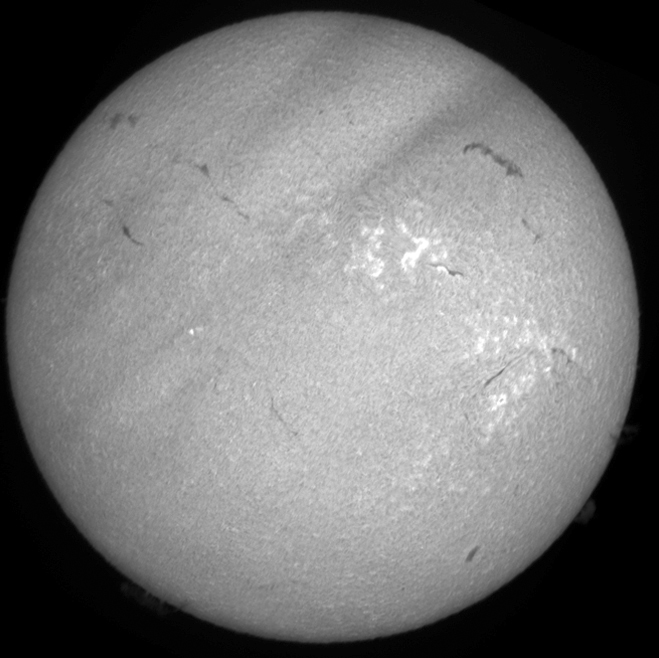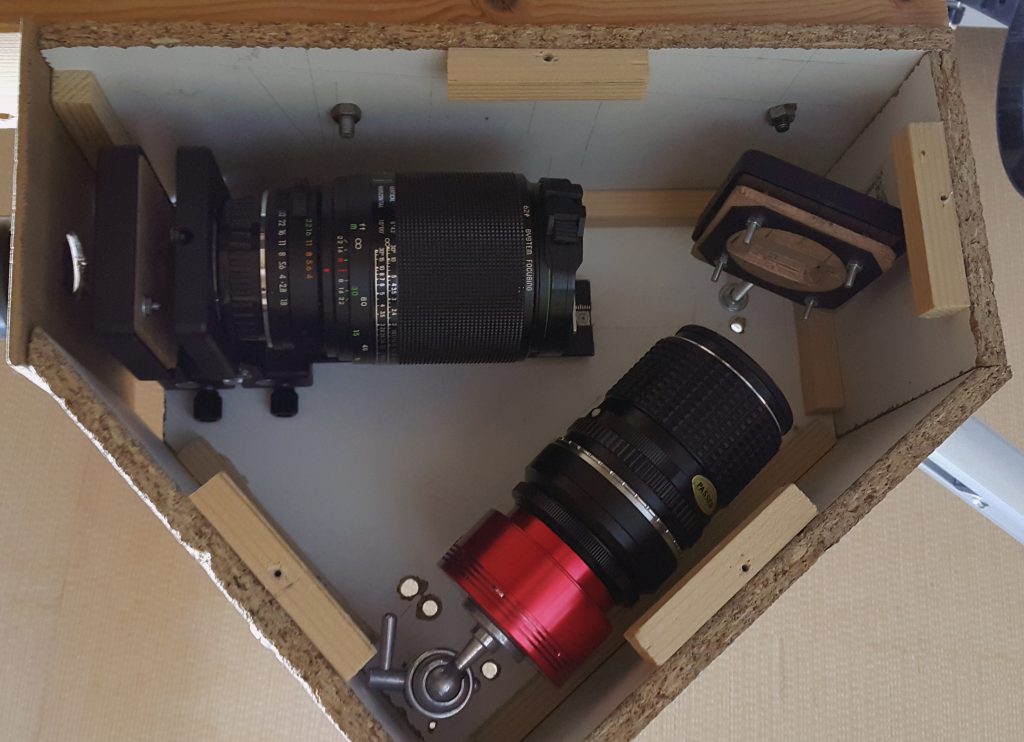
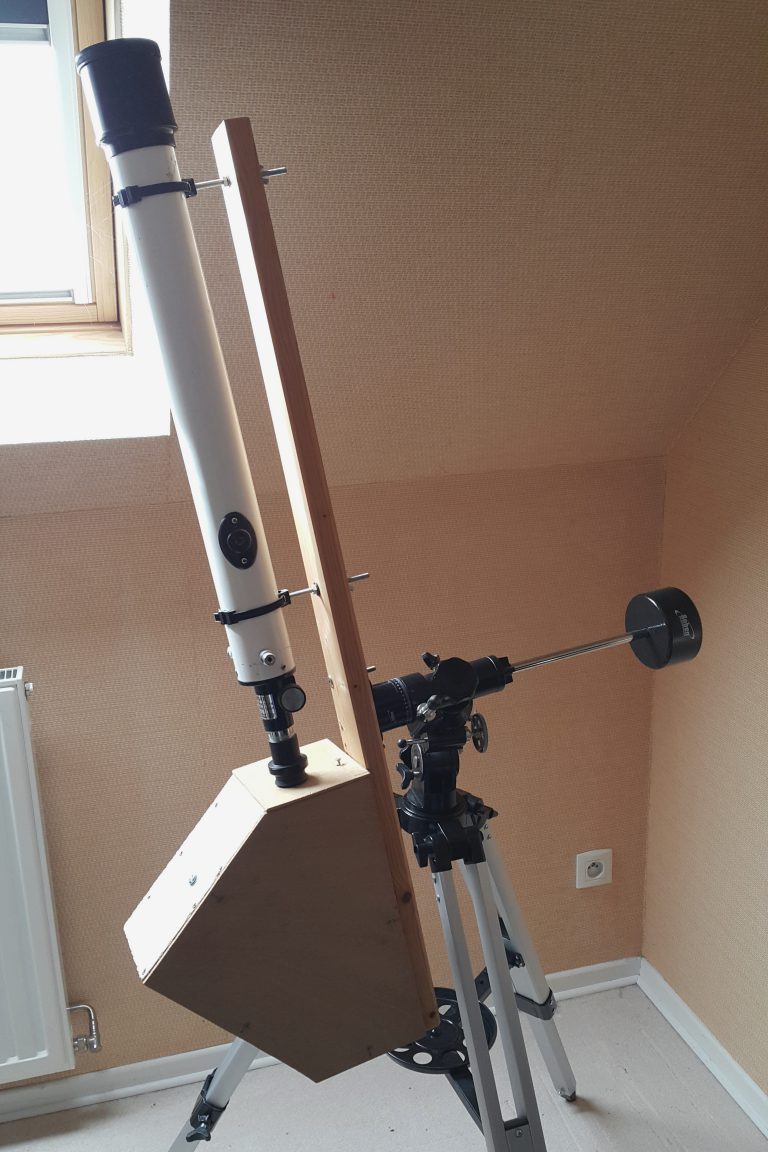
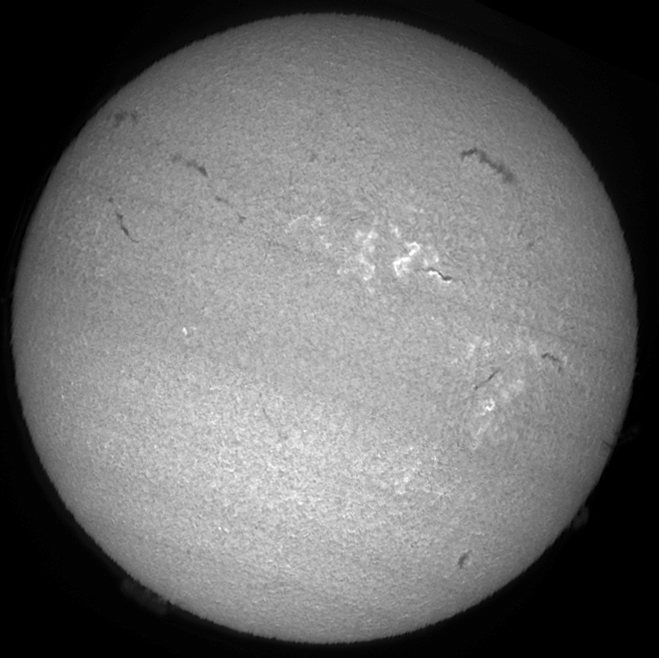
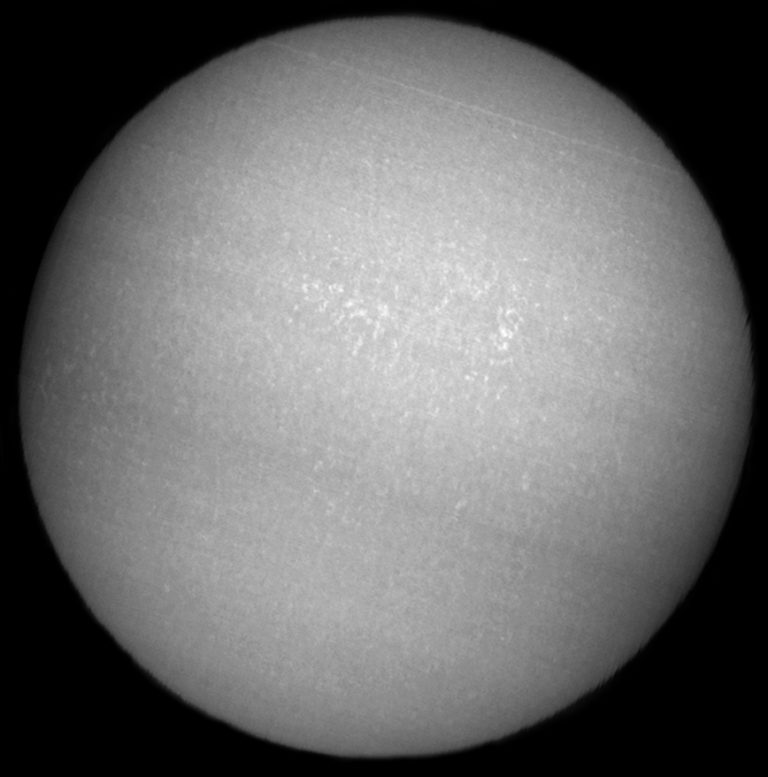
instrument description
A spectroheliograph is an instrument dedicated to solar spectrography and able to photograph the surface of the sun (photosphere and chromosphere) at different wavelengths. In particular, it is able to show the chromosphere in the Halpha or the Calcium lines. I built this spectroheliograph on 2017 by following the tutorial very well done and provided by Christian Buil:
http://astrosurf.com/buil/us/stage/calcul/calcul.htm.
It is a high resolution (R>10,000) slit spectrograph using a “blazed” diffraction grating of 2400 lines / mm. The slit is 25 µm wide and 3mm high. Inexpensive and used optics all consist of my 60/700mm refractor, a 200mm f/4 Tamron collimator lens and a Pentax SMC 135mm f/3.5 lens. A high speed planetary-types Z.W.O. asi120MM fits perfectly. The diffraction grating is mounted on a rotating support so as to choose the desired wavelength to capture which is ranging from near UV to near IR. In particular the 2 wavelengths that can be studied with such an instrument are the Halpha line centered at 656.3 nm (red color) and the K and H of ionized calcium lines respectively centered at 393.3 nm and 396.9 nm (purple color). There is also the D3 line of ionized Helium centered at 587.6 nm but which is much thinner and therefore which will give a lower quality image.
capturing description
The principle of capture is as follows: we choose beforehand the absorption line that we want to capture, for example the Halpha line centered on 656 nm, we point with the equatorial mount towards the sun by positioning a little beyond its limb right at the edge of the slit, we trigger the capture of the film with the camera and we let the solar disk pass in front of the slit since the earth is spinning! No need for a tracking motor since the principle is to let the star drifts in front of the slit. Thus we obtain a thin slice of the solar spectrum in the Halpha line as shown in this example that I carried out. The size of the solar disk on the slit being greater than 3 mm, 2 sessions in front of the slit are necessary to get the complete solar disk.
video processing tool
The video processing is carried out by a software called ISIS and also available on Christian Buil’s website:
http://www.astrosurf.com/buil/isis-software.html
This software allows to reshape and reassemble each of the columns centered exactly on the Halpha line and to reconstruct the entire image of the sun. As the speed of the camera’s shutter is not synchronized with the scanning speed of the sun in front of the slit, the final image of the sun obtained after reconstruction will be rather elliptical. No problem with Photoshop tool or similar to make it perfectly round at the end.

